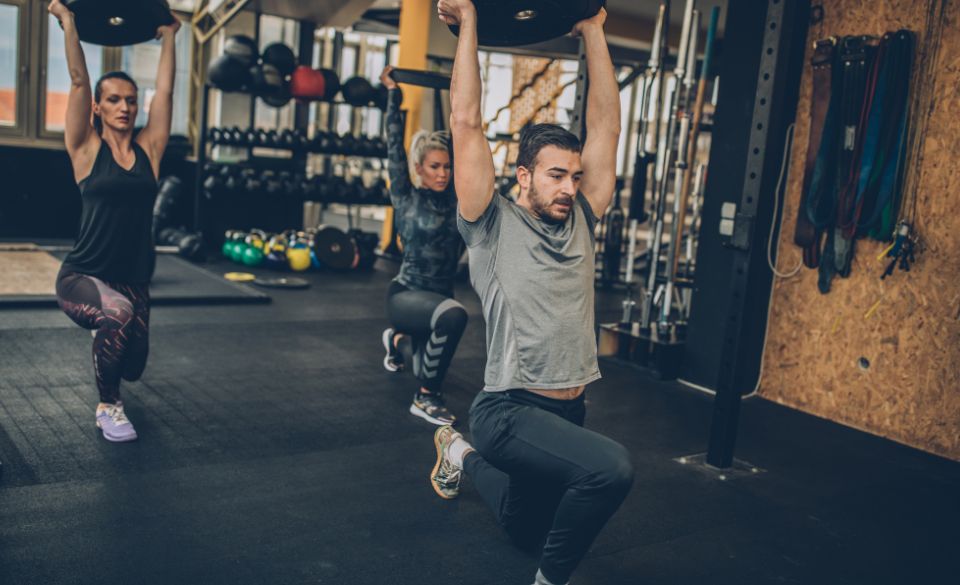
Can I Lift Weights With A Pacemaker – A Complete Guide
Page Contents
Hey there, fitness enthusiasts! Today, we’re tackling a question that many individuals with pacemakers often ask: “Can I lift weights with a pacemaker?” If you’re someone who loves pumping iron or is interested in strength training, but also has a pacemaker, you’ve come to the right place. In this article, we’ll explore the topic and provide you with valuable insights. So, grab your dumbbells and let’s dive in!
Understanding Pacemakers
Before we address the question of lifting weights with a pacemaker, let’s take a moment to understand what a pacemaker is. A pacemaker is a small electronic device implanted under the skin, usually in the chest area, to help regulate the heart’s rhythm. It consists of a generator and leads that are connected to the heart.
Pacemakers are commonly used to treat various heart conditions, such as bradycardia (a slow heart rate) or arrhythmias (abnormal heart rhythms). The pacemaker delivers electrical signals to the heart, stimulating it to beat at a normal rate and rhythm.
Can I Lift Weights with a Pacemaker?
The good news is that, in most cases, individuals with pacemakers can safely engage in weightlifting and strength training exercises. However, it is crucial to consult with your healthcare provider before starting or modifying any exercise program. They will have the best knowledge of your specific medical condition and can provide personalized recommendations.
Several studies have examined the effects of weightlifting on individuals with pacemakers. A study published in the “American Journal of Cardiology” found that resistance exercise, including weightlifting, can be safely performed by individuals with pacemakers. Another study in the “Journal of Cardiopulmonary Rehabilitation and Prevention” reported that weightlifting did not negatively impact pacemaker function or lead integrity.
Guidelines for Weightlifting with a Pacemaker
If you’ve received the green light from your healthcare provider to lift weights with a pacemaker, here are some guidelines to keep in mind:
1. Consult with your healthcare provider: Before starting any weightlifting routine, it’s crucial to have a discussion with your healthcare provider. They can assess your specific situation, evaluate the condition of your pacemaker, and provide personalized guidelines and precautions.
2. Start slow and progress gradually: Begin with light weights and focus on proper form and technique. Gradually increase the intensity and weight as you gain strength and confidence. This approach allows your body to adapt to the exercise gradually.
3. Be mindful of your body: Pay attention to how your body feels during and after weightlifting sessions. If you experience any chest pain, dizziness, or irregular heartbeats, stop exercising immediately and seek medical attention.
4. Maintain good hydration and breathing techniques: Proper hydration is essential for everyone, including individuals with pacemakers. Stay hydrated throughout your workout sessions. Additionally, focus on controlled breathing during weightlifting exercises to optimize oxygen flow and enhance overall cardiovascular health.
Remember, everyone’s situation is unique, and guidelines may vary depending on individual factors. Always consult with your healthcare provider for personalized advice and recommendations based on your specific medical condition and the type of pacemaker you have.
Potential Risks and Precautions
While weightlifting with a pacemaker is generally considered safe, there are a few potential risks and precautions to keep in mind:
Avoid placing excessive strain on the upper body: Some weightlifting exercises, such as heavy bench presses or overhead presses, may put significant strain on the upper body and chest. These exercises could potentially impact the area where the pacemaker is implanted. It’s important to discuss with your healthcare provider which exercises are safe for you and which ones to avoid or modify.
Be cautious with electrical muscle stimulation (EMS) devices: Electrical muscle stimulation devices, often used in conjunction with weightlifting, can interfere with pacemaker function. Consult with your healthcare provider before using any EMS devices to ensure they are safe to use alongside your pacemaker.
Check pacemaker settings regularly: Regular check-ups with your cardiologist are essential to monitor the functioning of your pacemaker. Ensure that your pacemaker settings are adjusted appropriately for your exercise routine. Your healthcare provider may recommend specific settings for physical activity, such as an increased heart rate threshold.
Listen to your body: Pay attention to any unusual symptoms or sensations during weightlifting. If you experience chest pain, palpitations, shortness of breath, dizziness, or any other concerning symptoms, stop exercising immediately and seek medical attention.
Inform your gym or trainer: If you exercise at a gym or work with a personal trainer, it’s important to inform them about your pacemaker. They should be aware of any precautions or modifications needed during your weightlifting sessions.
Remember, the specific guidelines and precautions may vary based on your individual case, including the type of pacemaker you have and any underlying cardiac conditions. Always consult with your healthcare provider and follow their advice to ensure a safe and effective weightlifting routine.
The Benefits of Weightlifting with a Pacemaker
Despite the necessary precautions, weightlifting can offer numerous benefits for individuals with pacemakers:
1. Improved cardiovascular health: Engaging in regular weightlifting can improve cardiovascular fitness and overall heart health. It can help strengthen the heart muscle, improve blood flow, and enhance endurance.
2. Increased muscle strength and bone density: Weightlifting promotes the growth and development of muscles, helping to improve strength and stability. It can also contribute to increased bone density, reducing the risk of osteoporosis and fractures.
3. Enhanced quality of life: Regular exercise, including weightlifting, has been shown to improve mental well-being, boost mood, reduce stress levels, and increase overall quality of life.
4. Weight management and metabolism: Weightlifting can aid in weight management by increasing muscle mass, which in turn boosts metabolism. It can help with body composition, maintaining a healthy weight, and improving body confidence.
5. Functional strength for daily activities: Strong muscles are essential for performing daily tasks with ease. Weightlifting can improve functional strength, making activities like lifting, carrying, and bending more manageable.
Remember, the decision to lift weights with a pacemaker should always be made in consultation with your healthcare provider. They can provide personalized guidance based on your unique medical history and help you determine the best approach for weightlifting that aligns with your overall health goals.
Can I Lift Weights With A Pacemaker- The Conclusion
In conclusion, weightlifting and strength training exercises can generally be performed by individuals with pacemakers. However, it is crucial to consult with your healthcare provider and follow their recommendations. They can assess your specific situation, evaluate the condition of your pacemaker, and provide guidelines to ensure safe and effective weightlifting.
By following proper techniques, starting with light weights, progressing gradually, and listening to your body, you can safely enjoy the benefits of weightlifting with a pacemaker. Remember, your health and well-being are of utmost importance, so always prioritize safety and seek professional guidance when it comes to exercise and your pacemaker. Lift those weights, stay strong, and keep your heart healthy!



